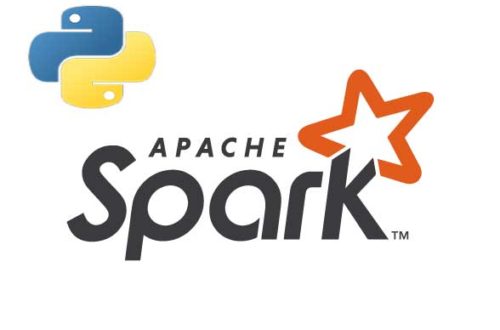
Modern web design focuses on displaying media in clear and aesthetic ways. It also places an emphasis on accessibility, across devices and for a variety of users. This is partially due to changing tastes and partially due to advances in technology. Advances in media optimization play a role in particular.
The media you use and the way it affects the experience of your users have a huge impact on the effectiveness of your sites. It also affects your page loading speed, which impacts your search rankings and your bottom line. Java is the most widely used language in web and mobile applications. Finding suitable Java tools is key to maximizing the effectiveness of your site media.
In this article, you’ll learn how media is optimized and be introduced to 6 tools you can use to optimize your media using Java.
How Is Media Optimized?
Media optimization is the process of increasing the efficiency of your images, videos, and audio. Efficiency is typically increased using a combination of compression and lazy loading techniques.
You can compress media files using either lossless or lossy compression algorithms. Lossless compression reduces file size by referencing data repetitions with variables. Duplicated data can then be eliminated with no loss of information.
Lossy compression reduces media size by eliminating metadata or by decreasing the number of pixels or colors used. Data eliminated in lossy compression cannot be restored.
Lazy loading is a method in which only the portion of your page currently being accessed is loaded. This prevents media from being loaded unnecessarily and ensures that the media actually being viewed is loaded first. An example of lazy loading is the infinite scroll feature.
To simplify image optimization, you can use Digital Asset Management (DAM) tools or Content Delivery Networks (CDNs). These tools often have built-in features for optimization during upload or when content is served, as well as Artificial Intelligence (AI) capabilities that help speed up the process and preserve the quality of compressed images.
For example, a DAM solution can help you to store only one version of an image that is optimized when requested from the server. This type of optimization can include supplying responsive images or maximizing compression formats, according to browser specifications.
Why Optimize Media?
Media optimization is done for a number of reasons, primarily related to cost and performance. Media with smaller file sizes are cheaper to store and require less bandwidth to transfer. If you are storing or transferring a large amount of media, this can lead to significant savings.
Smaller media files can also be delivered more quickly to browser clients. Smaller media files can help your websites load faster and more smoothly. This improves the overall user experience and can increase user conversion.
6 Tools for Optimizing Media with Java
Media is handled in Java through a variety of APIs. Unfortunately, these APIs don’t always provide the flexibility and efficiency that can be achieved in other languages. To account for this lack, you’ll need tools and libraries to increase Java’s functionality. The following are all free, open-source tools that can be used with Java to optimize your media.
ImageOptimization is a Java library you can use to losslessly compress images. You can use it with Linux systems, specifically Ubuntu. ImageOptimization supports converting files from GIF to PNG as well as WebP.
ImageOptimization includes features for batch processing and automated validation of images.
To use it, you must have the Java SE Development Kit (JDK) 8 and Maven 3.3 or later. Maven is a tool for building and managing Java projects.
2. pngtastic
pngtastic is a Java library you can use to optimize PNG images. It is a single jar file with no dependencies. Since pngtastic doesn’t rely on the Abstract Window Toolkit (AWT) it can be used in a wide variety of environments, including Google App Engine. AWT is the original Java toolkit for using graphics and creating user interfaces.
pngtastic supports image optimization and PNG image layering.
3. ImageJ
ImageJ is a tool you can use to process images. You can use it via an API or via software for Windows, Linux, and OS X systems. It supports TIFF, GIF, JPEG, BMP, PNG, PGM, FITS, and ASCII file formats.
ImageJ includes features for automation using macros, image enhancement, and extension via a variety of plug-ins. ImageJ requires you to have Maven installed.
4. TinyPNG
TinyPNG is a tool you can use to compress PNG images using lossy compression. You can use TinyPNG with Java through a REST API. TinyPNG is free for the first 500 images you process each month.
TinyPNG includes features for batch processing, preservation of metadata, and automatic optimization.
5. OpenIMAJ
OpenIMAJ is a set of Java libraries you can use for image, audio, and video processing. You can use it to analyze media content and generate content. OpenIMAJ can be used with Windows, Linux, and OS X systems.
OpenIMAJ is typically used for processing media for machine learning. To use OpenIMAJ, you must have Maven installed.
TwelveMonkeys is a collection of plug-ins and extensions that you can use to extend the Java ImageIO API. It increases the number of formats supported by ImageIO. ImageIO is the standard image processing utility in Java.
TwelveMonkeys supports a variety of file formats, including BMP, JPEG, PNM, TIFF, HDR, PICT, TGA, and SVG.
Conclusion
The huge array of options that Internet users have when it comes to sites and applications creates a highly competitive market. Your sites and applications have a minimal amount of time to catch and keep the attention of potential users. To ensure that users have the best experience, you need to integrate media optimization into your design practices. Hopefully, the tools in this article can help you do just that.
Gilad David Maayan is a technology writer who has worked with over 150 technology companies including SAP, Samsung NEXT, NetApp and Imperva, producing technical and thought leadership content that elucidates technical solutions for developers and IT leadership.


